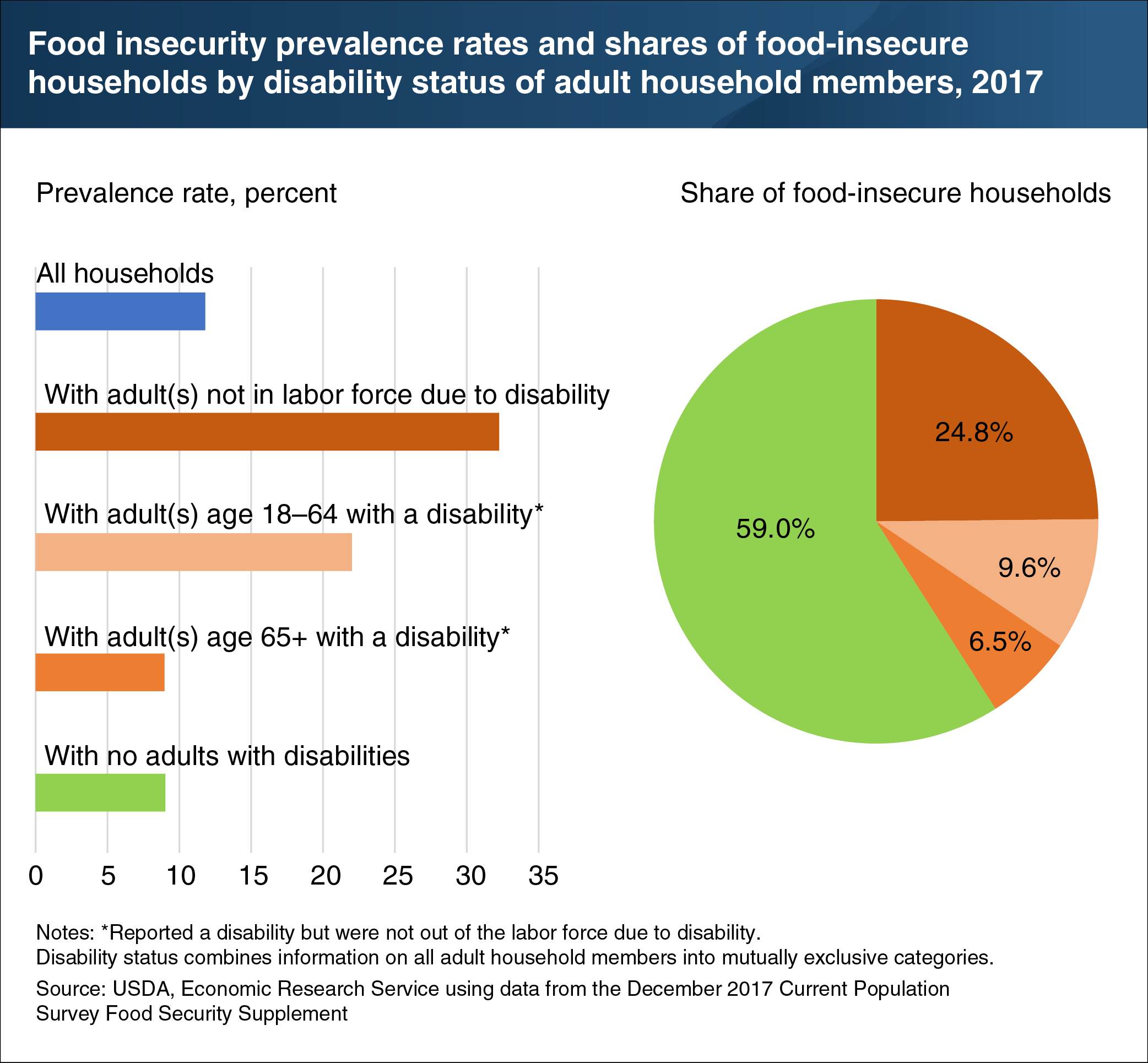Disability status can influence the risk of experiencing food insecurity
- by Michael D. Smith and Alisha Coleman-Jensen
- 4/2/2019

Households with adult members who have a disability are at higher risk of experiencing food insecurity—having to struggle at some time during the year to provide enough food for all their members. U.S. households that included adults with disabilities who were not in the labor force due to disability had the highest food insecurity rate in 2017 at 32.3 percent, followed by households with working-age adults with disabilities not out of the labor force due to disability at 22.0 percent. Households with elderly adults with disabilities do not appear to have as great a risk for food insecurity. In 2017, 9.0 percent of these households were food insecure, a rate similar to that of households with no adults with disabilities. Elderly adults with disabilities may have developed their disabilities after their working years and have savings and/or more stable income sources, such as Social Security or pensions, than working-age adults with disabilities. Among all food-insecure households in 2017, 41 percent included an adult with a disability. A version of this chart appears in the ERS data visualization "Food insecurity and very low food security by education, employment, disability status, and SNAP participation."
We’d welcome your feedback!
Would you be willing to answer a few quick questions about your experience?

